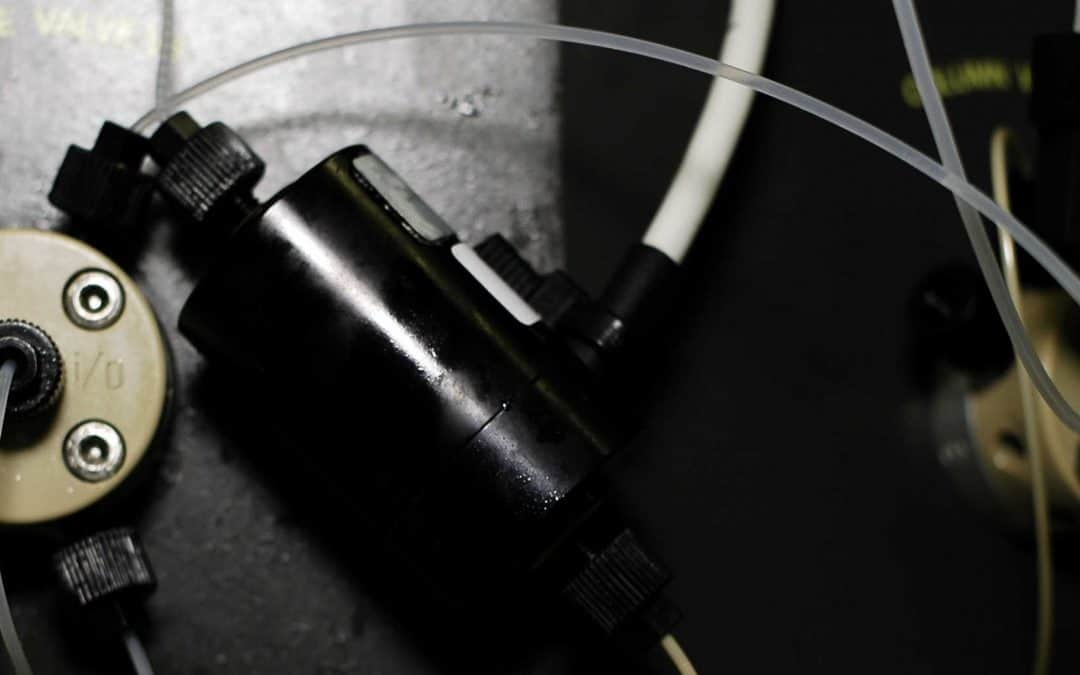The size of a protein is an important physical characteristic that provides useful information on oligomeric state, on protein aggregation state and on protein protein complex formation.
For biopharmaceutical products, characterisation of species distribution is critical as aggregates not only consume monomers and thus reduce the efficiency of the drug but they are also considered as one of the main factors increasing the risk of immune response.
Protein purity in terms of molecular species and regarding conformational homogeneity is also of paramount importance for crystallography studies as this is a major determinant for successful protein crystallization.
Although Size Exclusion Chromatography (SEC) is the historical and still most commonly used analytical tool to characterize the size distribution of protein samples, using SEC alone to characterize your sample is generally not sufficient. We routinely use two biophysical methods exploiting a property of light called light scattering: SEC-MALLS and DLS. Besides giving its beautiful colour to the sky of our planet, light scattering also gives a sensitive picture of the agglomeration state of proteins.
After a brief description of these 3 methods, we will point out their strengths and weaknesses and then discuss which method to select depending on how completely you need to characterize aggregate size distribution.
Each of the techniques mentioned above differ in the measuring principle and thus in the type of information obtained.
For SEC-UV method, the different species are separated according to their size and the proportion of each specie is estimated using an on-line UV absorption detector.
The main drawback with SEC is that it is notorious for filtration effects and poor sample recovery: the SEC column can often act as a filter, removing aggregates, or potentially breaking up large aggregates. To be able to exploit the results of SEC analysis, the recovery of the injected sample needs to be carefully monitored. However, as the recovery is difficult to evaluate more accurately than +/- 10%, only significant loss of aggregates will be detected. Moreover, SEC involves substantial dilution of the sample and thus potential dissociation of reversibly aggregated species.
Therefore, even if SEC remains the primary analytical tool for characterization of protein size because it is easy to implement, the method can not be trusted for accurate detection of large aggregates and more sensitive methods are required.
The SEC-MALLS (Size exclusion chromatography with online multiangle laser light scattering) also includes a size exclusion chromatography but is based on light scattering analysis. In «classical» or «static» light scattering, the total intensity of scattered light is monitored at one or more angles relative to the incident light beam. Since the signal from the light-scattering detector is directly proportional to the molar mass of the protein multiplied by the concentration, this method is particularly sensitive to high molecular weight aggregates. Furthermore by combining this signal with that from a concentration detector (refractive index or absorbance) it is possible to measure the molar mass of each peak coming off the column, allowing an absolute quantification of molar masses without calibration of the column. The SEC-MALLS method is probably the most sensitive method for detection of large aggregates: aggregates representing as low as 1% of total species can be detected.
But SEC-MALLS still has some drawbacks, the major being that the method inherits all the disadvantages of SEC: change in aggregates distribution from dilution, change in buffer, adsorption/filtration, etc… So, as for SEC-UV, the recovery needs to be carefully monitored.
When there is a doubt with SEC-MALLS analysis results, the DLS appears as a good complementary method. DLS is also based on light scattering but in this case it is the fluctuations over time of the scattering intensity that are measured. The rate of the scattering fluctuations is directly related to the diffusion coefficient which in turn is a direct measure of hydrodynamic size.
The important distinction compared to classical light scattering is that detectors measure molecular mass independently of molecular shape, whereas DLS detectors measure hydrodynamic size which depends on both mass and shape. As for MALLS, large aggregates will produce very strong scattering signals so that sensitivity for large species is very high.
The main advantage of DLS is that it can be done as a batch-mode measurement. No dilution nor physical separation are applied to the sample and there is no column matrix on which the aggregates can be lost.
When multiple species are present, each has its own characteristic time scale for fluctuations. Thus in principle, it is possible to mathematically resolve and separate the contributions from each species. However in reality, the ability to distinguish different species diffusing at different rates is rather limited and it is only possible to determine protein size in solution accurately when there is only one specie.
A second weakness is that DLS analysis generates a lot of data that might not be reproducible: minor differences in the noise in the data or the fitting settings can change the numbers of peaks that are resolved from one replicate sample to another or between successive data acquisitions on the sample.
As a conclusion,
When you only need to determine the proportion of each specie present in your sample and do not require high sensitivity for aggregates detection: SEC-UV method will be sufficient.
When it is important to finely characterize and detect trace amounts of large aggregates, then SEC alone is not sufficient as not enough sensitive and SEC-MALLS should be considered as the reference method.
In the case where only few aggregates are detected with SEC-MALLS, DLS should only be used as supportive method in order to make sure that SEC-MALS is not missing some important species. However if different species are present, DLS will not allow to obtain accurate quantification and will only provide qualitative results.
Characterizing protein size in solution is not an easy task and no single analytical technique can allow absolute characterization. When accurate characterization is important for your application, it is only in combining methods that you will obtain reliable information.




